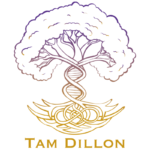In healing and spiritual work, unchecked bias can be one of the most dangerous and invisible forces at play. When we don’t take the time to examine the assumptions we carry – about who healing is for, what it looks like or how it should unfold – we run the risk of reinforcing harm in spaces that are meant to foster safety. Bias isn’t always loud or overt. Often, it’s quiet, normalized and dressed up as professionalism, intuition or even discernment.
Bias can show up in who we attract, how we market and who we unconsciously turn away. It can show up in the language we use, the aesthetics we adopt and the stories we choose to tell. It shows up in our pricing, our policies and in the silent rules we expect clients to follow. And when we fail to recognize these patterns, we may not notice the ways in which our work, despite our best intentions, excludes, diminishes or retraumatizes.
Many practitioners hold deep compassion and a sincere desire to help others, but desire alone doesn’t undo inherited prejudice or structural conditioning. If we aren’t actively checking our bias, we’re likely replicating the very systems our clients are seeking healing from. This doesn’t make us bad people. It makes us people shaped by the same dominant culture our clients are navigating. But as people in positions of care and influence, it is our responsibility to do better.
The cost of not checking our bias isn’t theoretical – it’s real. Clients may leave sessions feeling misunderstood or unseen. Marginalized individuals may avoid seeking support altogether. Harm may be done without any awareness it happened. And while we may never know how many people our unconscious bias has pushed away, the weight of that responsibility still sits with us.
In practical terms, unchecked bias can result in culturally inappropriate advice, spiritual bypassing or outright exclusion. A practitioner who isn’t aware of racial bias might minimize a client’s experience of systemic oppression. One who holds unconscious ableist beliefs might dismiss a neurodivergent client’s needs. A well-meaning healer who hasn’t unpacked internalized queerphobia might subtly pathologize LGBTQIA+ identities.
It’s not just about avoiding harm. It’s about cultivating a space where all people can show up as they are and receive support that affirms their full humanity. That doesn’t happen by default, it happens through intentional practice. This means learning from those with lived experience, investing in education around social justice and sitting in the discomfort of recognizing when we’ve fallen short. It means building relationships across difference, and being willing to hear hard truths without centering ourselves.
Checking our bias also requires us to reflect on power. Whether we acknowledge it or not, healing practitioners often occupy a position of influence in someone’s life. What we say and how we show up matters. If we only serve people who think, act, and look like us, we’re not creating inclusive spaces, we’re reinforcing our own comfort zones. That comfort comes at a cost.
When bias goes unchecked, it can also impact our professional credibility. As the healing industry becomes more visible and diverse, clients are becoming more discerning. They’re paying attention to who truly walks their talk. Performative allyship, surface-level diversity, and vague promises of inclusivity don’t build trust. Genuine accountability does. And that means continuously interrogating our own blind spots.
The process of checking bias is lifelong. There is no final destination. We will make mistakes. We will have to course correct. But the work of being a responsible practitioner includes recognizing when our impact doesn’t match our intent – and taking steps to do better.
So how do we begin this work in a meaningful and sustainable way? Start by auditing the foundations of your practice. Who is your work centered around? Who is missing from the picture? What assumptions are baked into your offerings, your language or your pricing structure? Be honest. Then begin the process of opening up your perspective.
Read widely. Follow educators and practitioners whose lived experience differs from your own. Examine the roots of your modalities – who created them, who benefits from them and who has been left out of the conversation. Reflect on how your own identity shapes what you see as normal or valuable. Be willing to let that shift.
Create feedback loops. Invite critique from trusted peers. Build community with people who will call you in. And when feedback does come, listen. Don’t explain. Don’t defend. Take it in. Let it change you.
Incorporate regular anti-bias training into your professional development. Not as a one-time checkbox, but as a necessary part of your skill set. Just as you wouldn’t stop learning about your modalities or craft, don’t stop learning how to hold space across lines of difference.
Inclusive practice isn’t about being perfect. It’s about being committed. The more we check our bias, the more trustworthy our work becomes. And in a field built on trust, that makes all the difference. The cost of not checking our bias is too high, especially for those who’ve been excluded or harmed by systems before. As healing practitioners, we have the opportunity to offer something different. But we have to choose it. Not once, but again and again. And in choosing it, we create a field where healing is not a privilege but a right, and where every client who walks through our door is seen, respected and honored in their full humanity.



